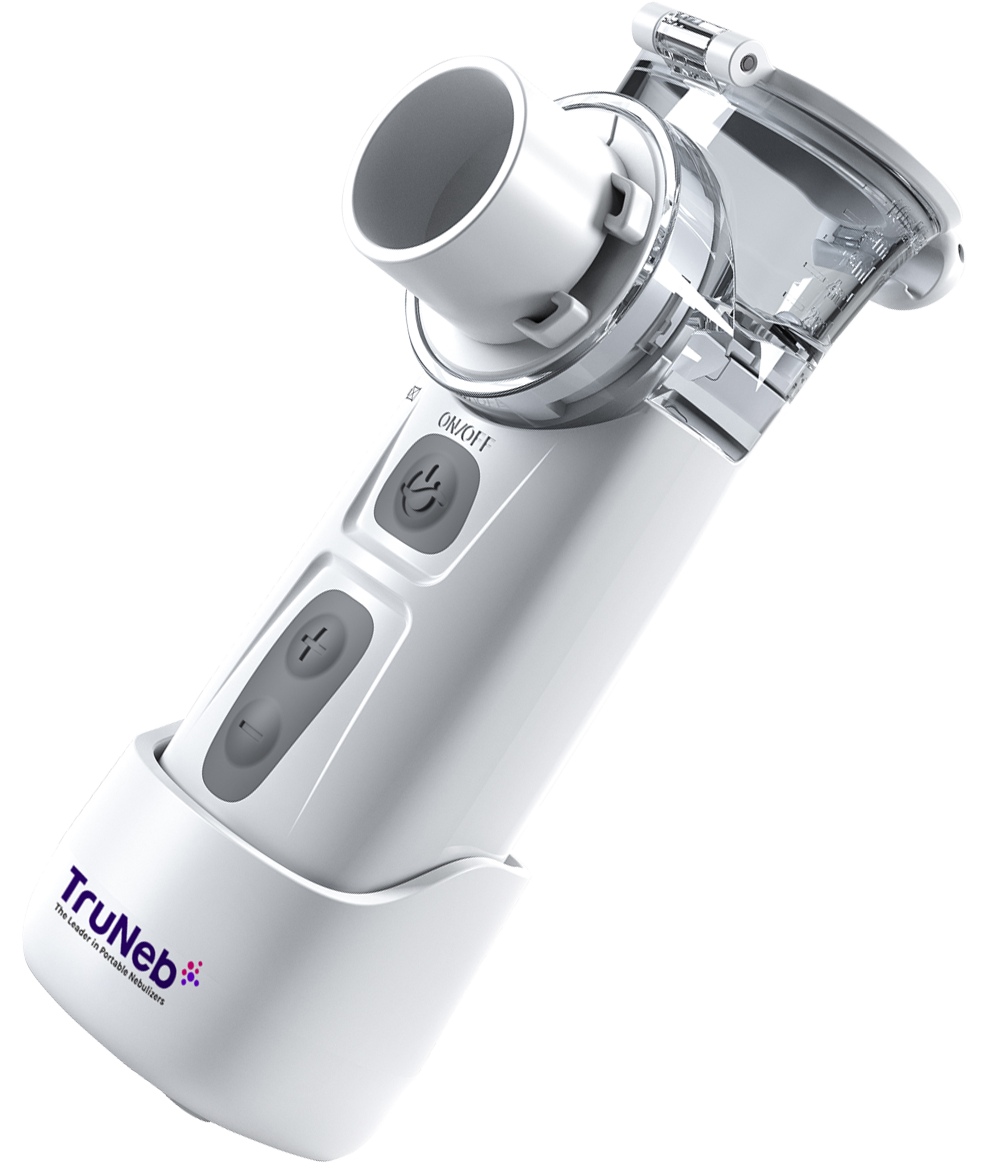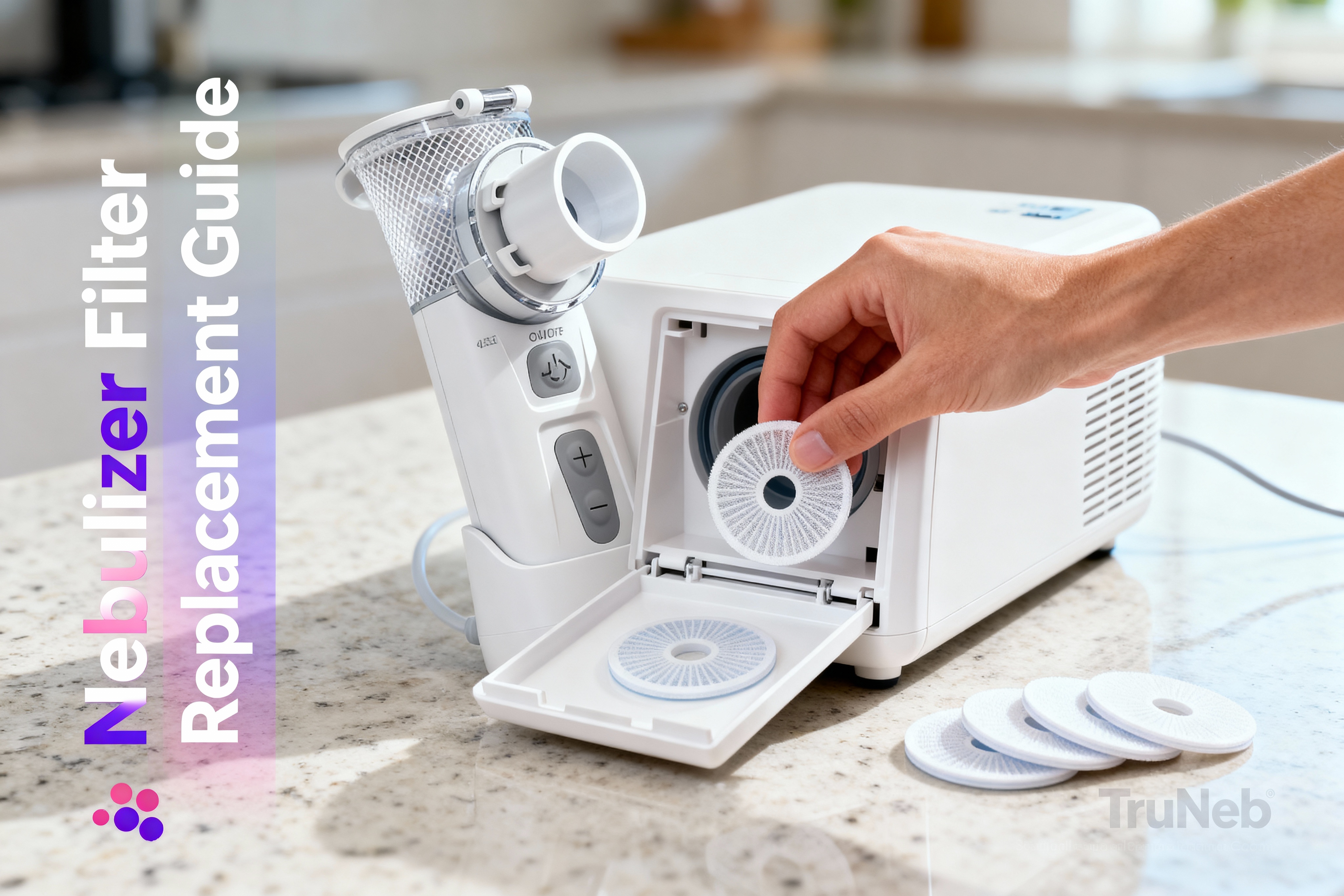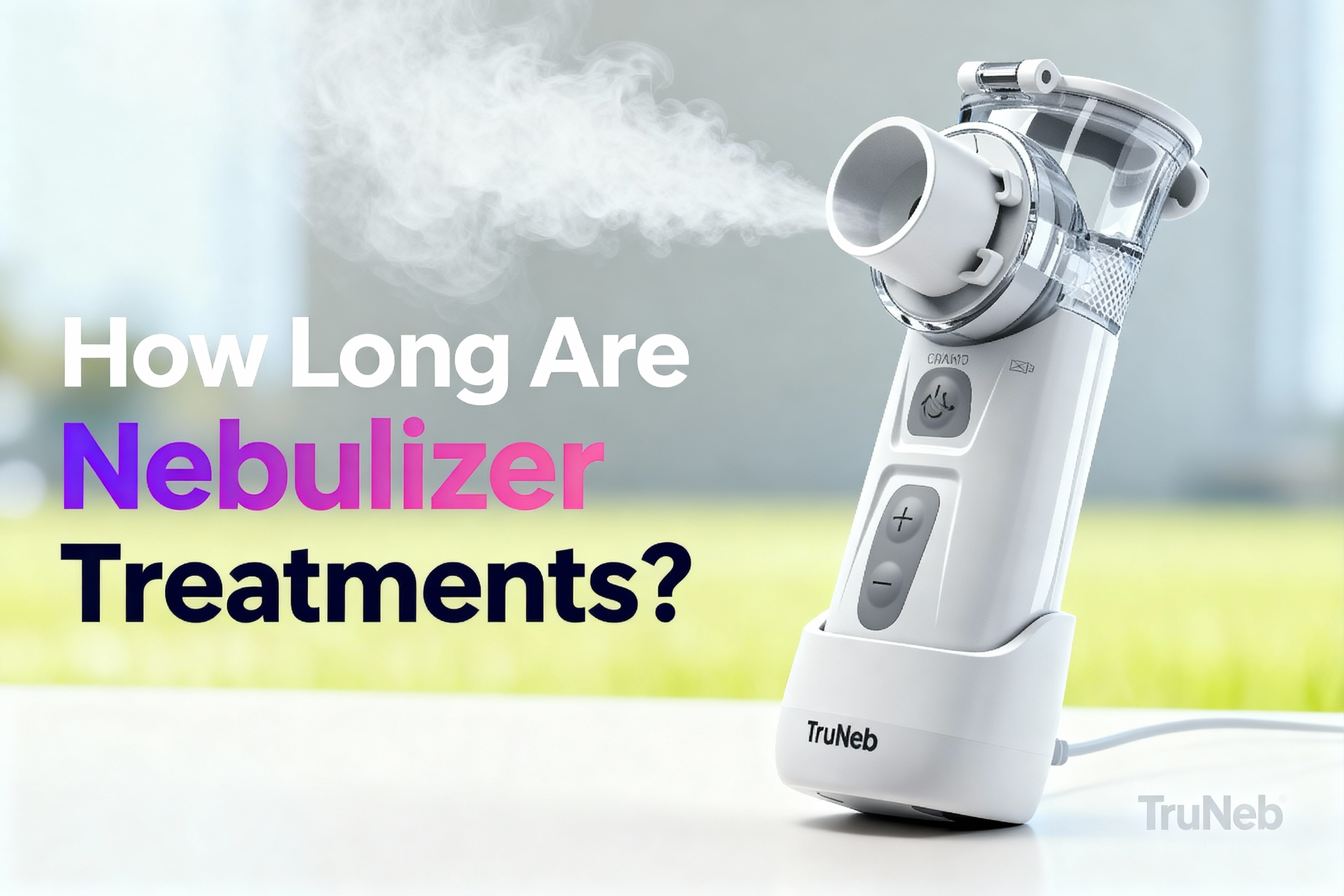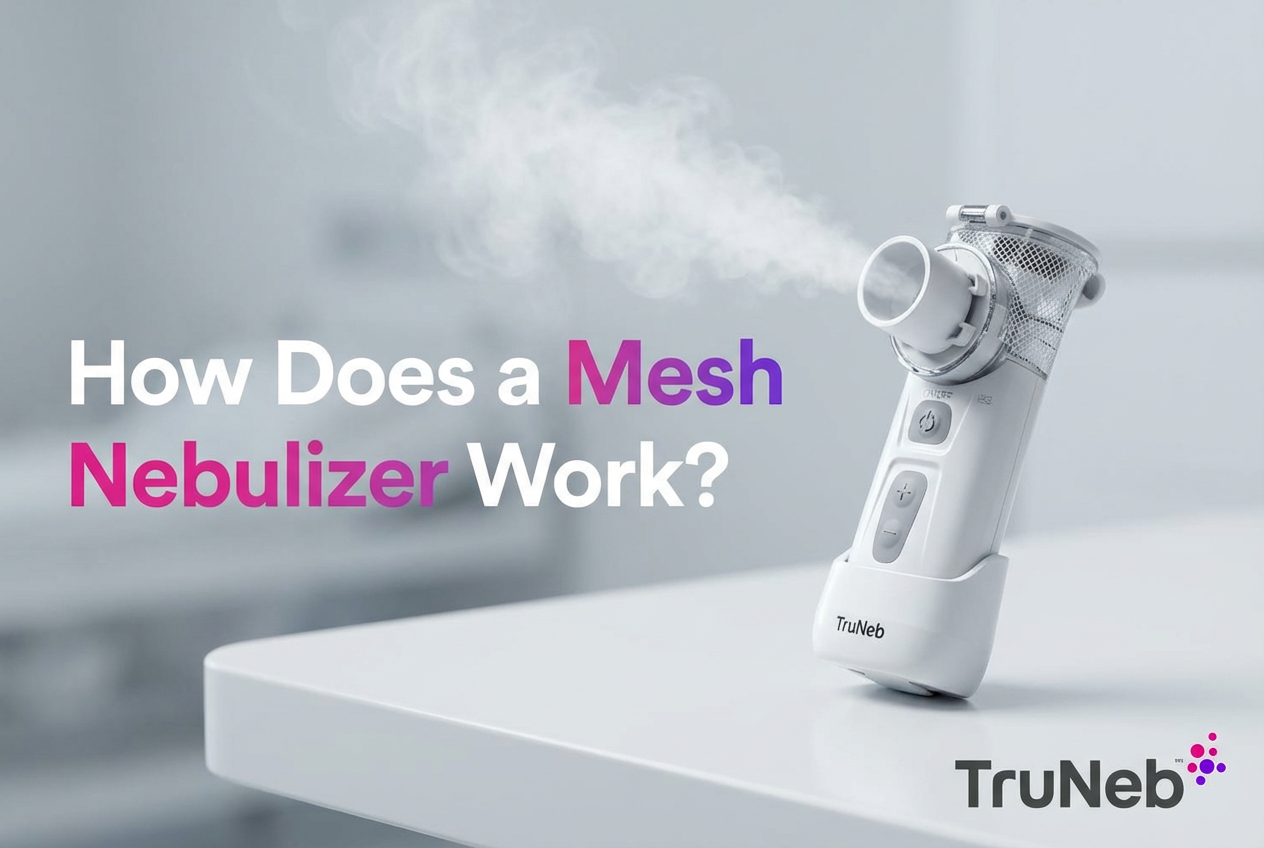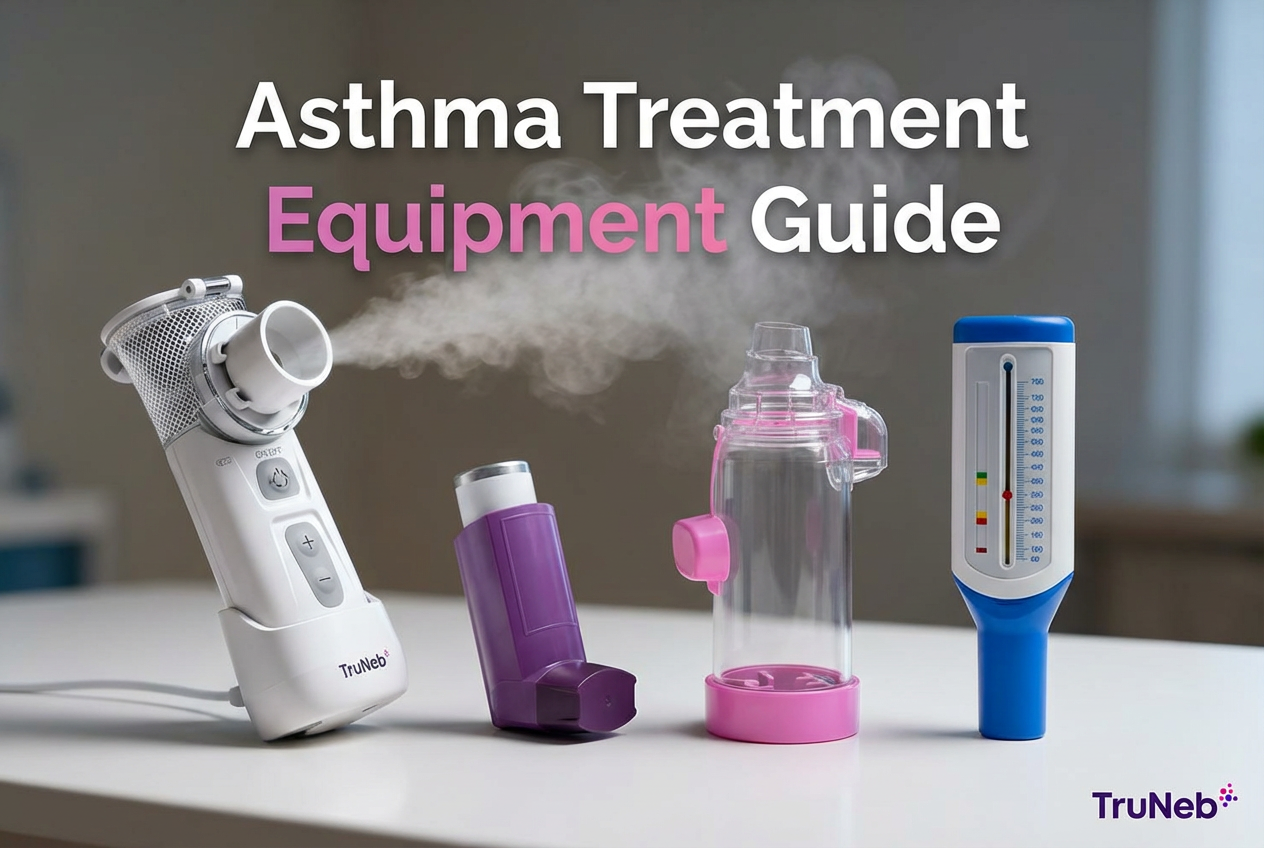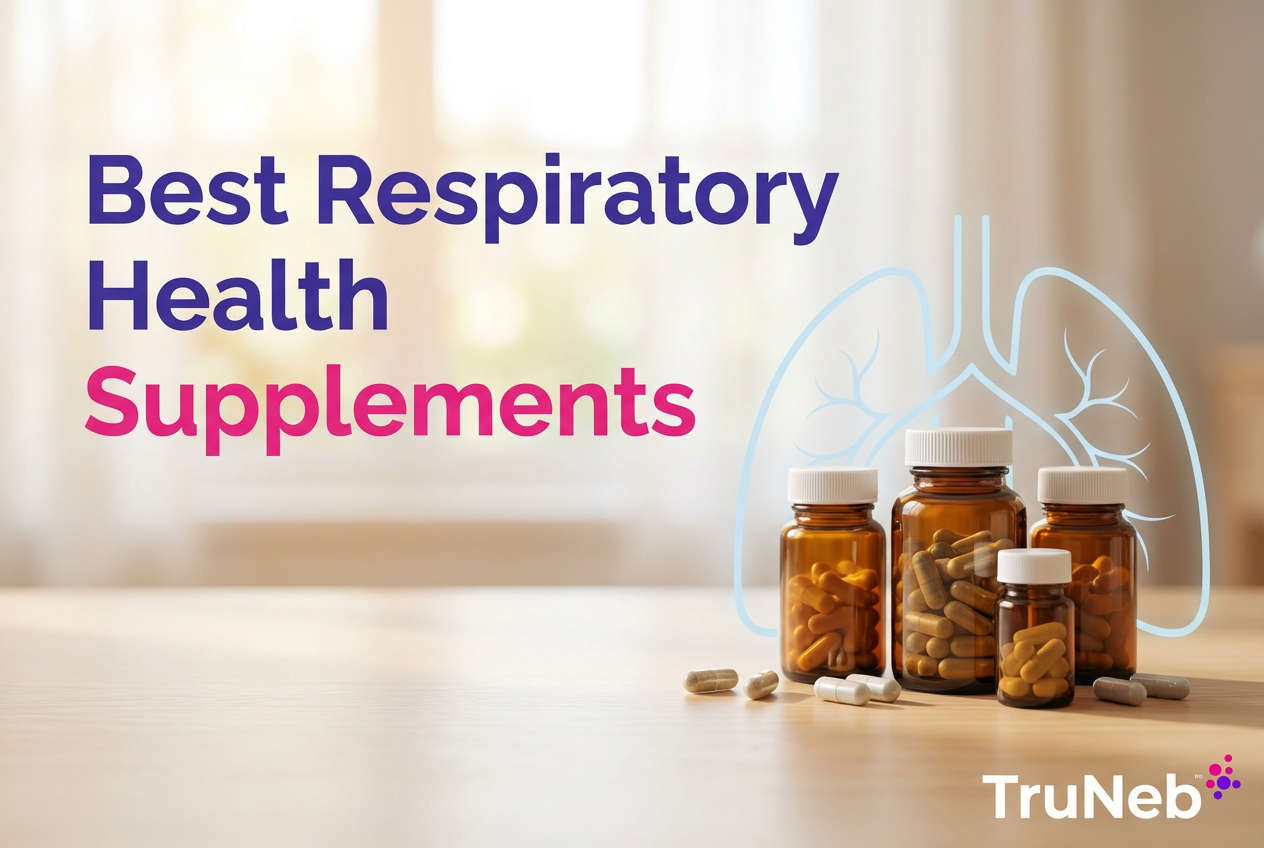On this page

Where Can I Buy Saline Solution for Nebulizer?
Understanding Nebulizer Saline Solution
You can purchase directly on our website at TruNeb.com
- 3% Hypertonic Saline Solution
- 7% Hypertonic Saline Solution

Nebulizer saline is sterile saltwater used for breathing treatments. Most people use 0.9% sodium chloride, also called normal saline. It helps thin mucus and can carry certain medications through your nebulizer so they reach your lungs.
You might also hear about hypertonic saline. These are stronger salt solutions, like 3% or 7%. They pull more water into your airways to loosen thick mucus. Hypertonic saline is used for specific conditions and usually needs a prescription. Doctors use saline nebulizers for conditions like asthma and COPD to loosen mucus; 7% hypertonic saline is commonly prescribed in cystic fibrosis.
Key point: Use only sterile saline labeled for inhalation. Don’t use tap water, contact lens solution, or homemade mixes in a nebulizer.
What Exactly Is Saline Solution for a Nebulizer?
It’s medical-grade saltwater made to be breathed into the lungs. Normal saline is 0.9% sodium chloride in sterile water. It typically comes in small single-use vials (also called unit-dose ampoules) that you twist open for one treatment.
Isotonic vs. Hypertonic
- 0.9% (normal saline) matches your body’s salt level. It’s gentle and common for daily treatments.
- 3% or 7% (hypertonic saline) is saltier and can thin very thick mucus. It can also cause coughing or wheezing in some people, so it’s used with medical guidance.
3% vs. 7% Hypertonic: What’s the Difference?
- 3% hypertonic saline is a milder option that can help loosen mucus and is sometimes used in supervised settings, such as for infants with bronchiolitis.
- 7% hypertonic saline is saltier and is commonly prescribed for very thick mucus in cystic fibrosis or bronchiectasis.
- Both are prescription products and can trigger cough or wheeze in some people. Ask your doctor if using a bronchodilator first makes sense for you.
Both 3% and 7% are prescription hypertonic saline; 7% is stronger and commonly used for very thick mucus, while 3% is milder and sometimes used in supervised settings.
Next, here’s where to get the right saline and what to ask for.
One-liner: Normal saline is 0.9% sterile sodium chloride for inhalation; stronger 3% or 7% saline is hypertonic and typically prescribed.

Where to Buy Saline Solution for Your Nebulizer
You can buy 0.9% normal saline over the counter at local pharmacies, big-box stores with pharmacies, and online retailers. Hypertonic saline (3% or 7%) usually requires a prescription and is filled at a pharmacy or shipped by a medical supplier.
Do You Need a Prescription? (OTC vs. Prescription)
- 0.9% normal saline: Over the counter. No prescription needed.
- 3% or 7% hypertonic saline: Usually prescription-only. Your pharmacy or a medical supplier will dispense it with your doctor’s order.
Local Pharmacies (CVS, Walgreens, Rite Aid)
Walk in and ask for “0.9% Sodium Chloride Inhalation Solution” in single-use vials. Most pharmacies stock 0.9% normal saline nebulizer vials over the counter. If it’s not on the shelf, ask the pharmacist. If you have a prescription for 3% or 7%, they can fill it and can special order if needed.
Big-Box Retailers (Walmart, Target, Costco)
Stores with pharmacies usually stock normal saline vials and can fill prescriptions. Prices can be lower, especially in bulk at warehouse clubs. Always check the label says “for inhalation.”
Online Retailers (Amazon and Pharmacy Sites)
If you’re looking to buy sterile saline solution online, Amazon and major pharmacy sites carry 0.9% unit-dose vials. You’ll find a wide range of 0.9% options with home delivery. Choose reputable sellers, check expiration dates in reviews, and stick to unit-dose vials. Store brand and well-known names are both fine when labeled for inhalation.
Medical Supply Websites and Manufacturers
Specialty suppliers carry a wide range, including hypertonic saline (prescription required). They can verify your prescription and ship to your door. Brands such as HyperSal (7% Rx) are common for hypertonic saline, while 0.9% unit-dose options include Modudose or Addipak (preservative-free). A portable nebulizer like TruNeb™ can be paired with sterile saline for fast, quiet treatments at home or on the go.
One-liner: 0.9% saline is OTC online and in pharmacies; 3% and 7% hypertonic saline are typically prescription-only.
| Factor | Local pharmacy | Big-box store | Online retailer | Medical supplier |
|---|---|---|---|---|
| Price | Moderate | Low–moderate (bulk deals) | Often low (many options) | Moderate (clinical focus) |
| Speed | Same-day pickup | Same-day (with errands) | Home delivery (shipping time) | Home delivery (ships after Rx† if needed) |
| Selection | Limited brands in stock | Limited in-store; more online | Very wide selection | Wide; includes hypertonic† |
| Expert help | Pharmacist on site | Pharmacy staff available | Product info & reviews | Specialists via chat/phone |
| Best for | Urgent needs, questions | Budget, one-stop trips | Stocking up, variety | Rx orders, specialized needs |
† Hypertonic saline (3% or 7%) typically requires a prescription and is dispensed by pharmacies or shipped by medical suppliers after Rx verification.
Tips for Buying the Right Saline
- Check the label. Look for 0.9% Sodium Chloride USP and “for inhalation.”
- Choose unit-dose vials. Single-use ampoules help prevent contamination and are pre-measured.
- Avoid preservatives. It should list only sodium chloride and sterile water.
- Match your order. If your doctor prescribed 3% or 7%, use that strength as directed.
- Watch the dates. Check expiration dates, especially when buying in bulk.
One-liner: Pick sterile, preservative-free unit-dose vials labeled for inhalation to keep treatments safe and simple.
| Feature | Single-use vials | Multi-dose bottles |
|---|---|---|
| Sterility | New sterile vial each treatment | Higher contamination risk after opening |
| Measuring | Pre-measured (3–5 mL) | Requires sterile tools and careful dosing |
| Waste | Open-and-use; no leftovers | Often discard within 24 hours of opening* |
| Handling | Minimal handling; twist and pour | Repeated opening/closing increases risk |
| Best use | Home nebulizing and pediatric use | Use only per specific clinical directions |
* Follow label instructions; once opened, sterility may not be maintained. Use multi-dose only if specifically instructed by your care team.
Using Saline Safely in Your Nebulizer
Follow the Right Strength
Use the concentration your doctor recommends. Normal saline (0.9%) is common. Hypertonic saline (3% or 7%) can cause cough or wheeze in some people and is usually prescribed. Some doctors suggest using a bronchodilator before hypertonic saline to reduce airway spasm.
Store and Handle It the Right Way
Keep vials at room temperature, away from heat or freezing.
Open a vial only when you’re ready to use it, and throw away any leftover solution. Keep boxes sealed and check expiration dates.
Know Possible Side Effects
0.9% saline is usually well tolerated. Hypertonic saline can cause coughing, throat irritation, or bronchospasm. If you feel chest tightness or have trouble breathing, stop and contact your doctor.
⚠️ If you develop severe breathing difficulty, bluish lips/face, or symptoms that rapidly worsen, seek emergency care immediately.
Talk to your doctor before trying a new medication.
One-liner: Use the strength prescribed, open a fresh vial each time, and discard leftovers to keep treatments safe.
What Not to Use in a Nebulizer
- No contact lens solution. It may contain preservatives and additives not meant for lungs.
- No homemade saline. Boiling doesn’t guarantee sterility. Contamination can lead to infection.
- No plain water. It’s not sterile and doesn’t match body fluids.
Only use sterile saline labeled for inhalation—don’t use contact lens solution, homemade mixes, or plain water.
Frequently Asked Questions
Tap or click a question below to see the answer:
0.9% normal saline is available over the counter. Hypertonic saline (3% or 7%) usually requires a prescription from your clinician.
Major pharmacy sites and retailers sell 0.9% unit-dose vials online with home delivery. Medical supply websites also ship saline; hypertonic saline orders typically require a valid prescription.
Look for "0.9% Sodium Chloride USP," "for inhalation" (inhalation solution), preservative-free, single-use (unit-dose) vials, and a valid expiration date.
No. Contact lens solutions may contain preservatives not meant for lungs, and homemade mixes are not sterile. Use only sterile saline labeled for inhalation.
0.9% is gentle and commonly used for routine treatments. Hypertonic 3% and 7% are saltier, draw water into airways to thin thick mucus, can cause cough or wheeze, and are used under medical guidance (usually by prescription).
For home use, unit-dose vials are preferred. They are sterile and pre-measured for each treatment. Multi-dose bottles have higher contamination risk once opened and often lead to waste.
Store at room temperature, away from heat, freezing, and direct light. Keep vials sealed until use, check expiration dates, open a vial only when ready, and discard any leftover solution.
Only if your clinician instructs you. Do not change your treatment plan or mix medications without medical guidance.
Wrap-Up
You can buy 0.9% normal saline for your nebulizer at pharmacies, big-box stores, and online without a prescription. If your care team prescribes 3% or 7% hypertonic saline, your pharmacy or a medical supplier can fill it and ship it. Choose sterile, preservative-free unit-dose vials and follow your doctor’s directions for the right strength.
A portable nebulizer like TruNeb can make treatments fast and quiet wherever you are, and it works with sterile saline and most standard medications as directed by your doctor.
Disclaimer: This article is for informational purposes and isn’t a substitute for professional medical advice. Always talk with your doctor about your health and treatments.

